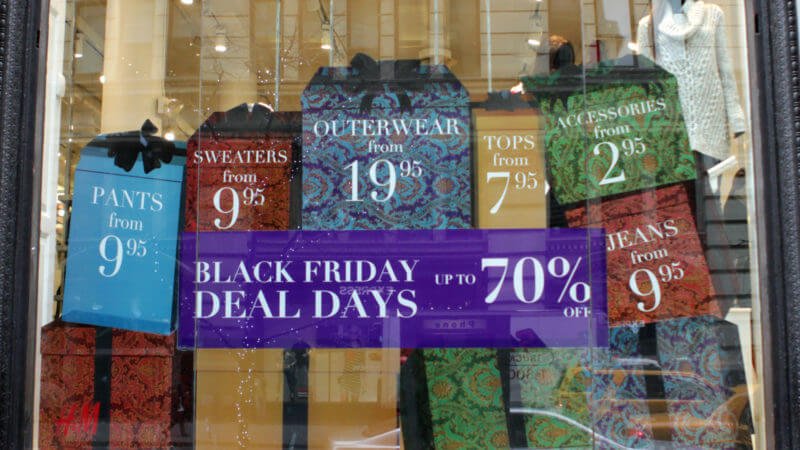Thanksgiving Day is upon us, and with it, the busiest shopping week of the year. The five-day stretch between Thanksgiving Day and Cyber Monday poses a unique challenge this year for retailers — 2019’s “Cyber 5” will kick-off a shorter-than-usual holiday shopping season with six fewer days between Thanksgiving and Christmas Day.
Fortunately for e-commerce brands and online retailers, the shorter season is not likely to impact how much consumers plan to spend during the next month. eMarketer reports 2019 will be the first year holiday revenue will surpass $1 trillion, a 3.8% jump over last year.
So what can online retailers expect over the next five days? We’ve assembled the following rundown this year’s holiday shopping forecasts so you know what’s coming.
Cyber Monday to see record sales
Adobe reports this year’s holiday season will bring in $143 billion in online revenue, with $30 billion coming in between Thanksgiving and Cyber Monday. Both Adobe and the National Retail Foundation (NRF) predict online holiday sales could see as much as a 14% lift over last year’s numbers.
The NRF expects 70 million consumers will shop online during Cyber Monday. At the same time, Adobe predicts those shoppers will spend $9.4 billion that day, nearly a 20% increase over last year’s Cyber Monday sales.
“Cyber Monday is once again expected to be the biggest online shopping day in US history, with a total that could approach — or even surpass — $10 billion,” reports eMarketer.
Consumer spending habits
Shoppers are expected to spend $892 on their holiday shopping, according to a holiday shopping survey of 2,000 consumers by The Harris Poll and OpenX. Half of these consumers already started their holiday gift buying back in September, with a majority of dollars spent during the holidays happening in online sales (desktop, mobile or tablet). Deloitte’s survey of 4,400 U.S. adults found the same — that most spending (59%) would happen online — but, the participants in Deloitte’s survey reported a much higher average holiday spend: $1,500 with $879 happening online.
Adobe predicts 47% of online holiday revenue will happen via a smartphone, with U.S. consumers spending $14 billion more on their mobile device this holiday season compared to last year.
What’s happening on Amazon?
A recent Episerver survey polling more than 4,500 shoppers across the U.S., UK and other countries revealed 42% would be buying most or all of their holiday gifts on Amazon.
Amazon also pulls more shoppers at the start of their shopping journey during the holidays — according to the survey, 32% of online shoppers who aren’t sure what they want to buy will start their gift search on Amazon compared to 18% who turn to Google. Amazon wins an even larger share when there’s a specific product being searched — for example, when searching for an apparel item, 43% of the shoppers surveyed by Episerver turn to Amazon versus 29% who turn to Google.
Amazon gave shoppers an early look at the discounts it will be offering between November 30 and December 2, with more than 100 deals spanning across various categories — from Amazon devices and Amazon brands to fashion, electronics and toy products.
Google Shopping ads will be key, even if growth is slow
Marketing Land contributor Andy Taylor says retailers can expect Google Shopping to play a key role during the holiday season this year, but is on the fence about whether or not the platform will see the growth it experienced during the last quarter of 2019.
“It’s unclear if Google Shopping has another big push like the one we saw last Q4 in it, or if Google has more or less used up its powder with respect to expanding these ad units to the extent observed at the end of 2018,” writes Taylor, who serves as the director of research for the search marketing firm Tinuiti, “As such, advertisers shouldn’t be shocked if Shopping growth is slower during the holidays this year than last year.”
(Don’t miss the digital commerce marketing tract at SMX West 2020!)
Taylor also noted Amazon’s appearance in Google Shopping ads, which has grown over the last year. In October, 2018, Amazon was barely visible in Shopping results for apparel, but this year tells a different story. “Amazon’s impression share is now more than double what apparel retailers saw last December and has held steady for the last three months,” reports Taylor.
Email marketing: “Free shipping” and “% off” discounts win
Last year’s holiday email marketing results were less than inspiring. After sending more holiday-themed campaigns than any previous year during the fourth quarter of 2018, brands saw average open rates at 10.5% and click rates at 1%, according to Yes Marketing’s 2018 holiday report. The holiday-themed email performance rates scored lower than non-themed emails sent during the same time period, which delivered a 12.6% open rate and 1.1% click rate.
For brands wanting to offer discounts via their email messaging, Yes Marketing’s Senior Director of Client Service Kyle Henderick said “% off” promotions performed best last year, delivering more than double the conversion rates of a business-as-usual message. He also says “Free Shipping” offers are an effective way to stand-out during the Cyber Monday email surge: “When subscribers are sorting through hundreds of Cyber Monday emails, ensuring free shipping is prominent is almost a sure-fire way to capture their attention.”

